Course Outline. Learning Objectives. FAQs. Example Lessons. And More
Details for Online Drone Course for Home-Schoolers
A Fun and Interesting Course for High School Science or STEM Credit and/or FAA Part 107 Certification
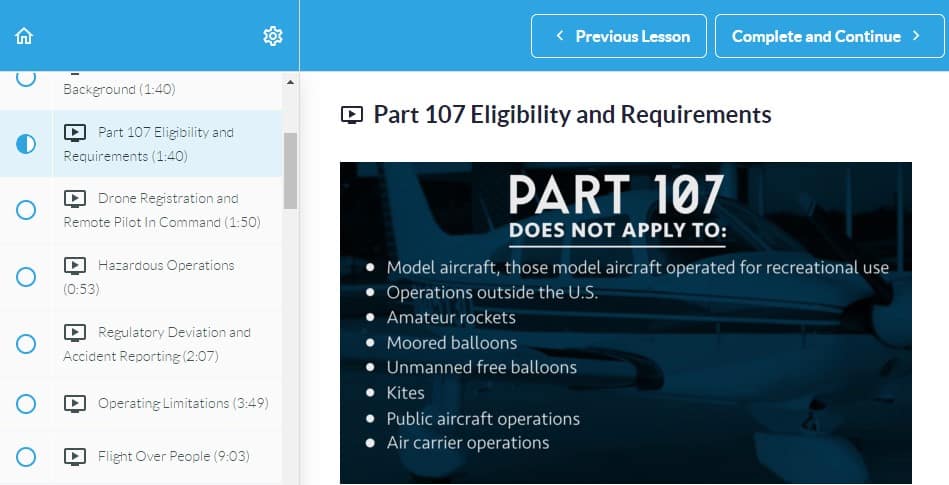
1. Course Outline and Objectives
2. What Is Included
3. Pricing
4. FAQ
5. Enroll Now
1. Course Outline and Objectives
This “at your own pace” course is in 4 sections, as outlined below. Together, the four sections require approximately 62 hours of coursework. While it is designed for a public high school semester, many home-schoolers finish more quickly.
SOL Objectives
This course directly fulfills SOL objectives for many states, and should easily align with your state for full credit needs. For example, see Alabama’s Course of Study Guide PDF (external link, beginning on page 99) on the Alabama Achieves website, Then view this PDF to see how this course aligns to the Alabama Course of Study.
Unlock the future of CTE and STEM for your student with this informative and interesting High School Drone Course for Home-Schoolers.
Section 1
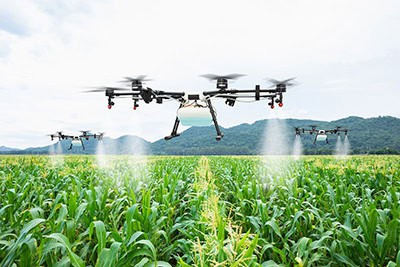
Understanding the Drone Industry and Unmanned Aircraft Components
Objective: Student will understand the basics of the drone industry, its current state, future potential, and the primary components that make up Unmanned Aircraft
- Module 1: Intro to the Unmanned Aircraft Industry
- Module 2: Current and Future Applications
- Module 3: UAS Platform Configurations and Components
- Module 4: Additional UAS Components
- Module 5: Gimbals and Sensor Technology
Section 2
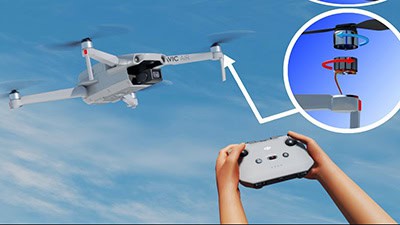
TRUST Certification, Flight Fundamentals and Maneuvers
Approximately 15 hours
Objective: Student will receive their TRUST certification, develop practical skills in flying drones, and understanding safety and operational protocols.
- Module 6: Flying Fundamentals
- Module 7: Basic Flight Maneuvers and Getting to Know the Controller
- Module 8: Flying Exercises
- Module 9: Advanced Flying Exercises
Section 3
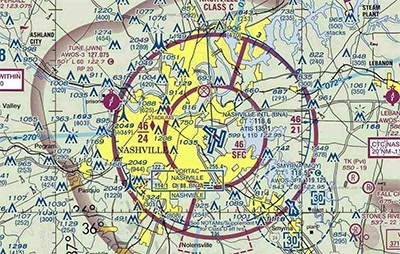
Part 107 Drone Regulations, Aviation Chart Reading, and Weather
Approximately 21½ hours
Objective: Student will understand the legal requirements for drone operations, be able to check and locate airspace and weather conditions, and understand aviation radio communication.
- Module 10: Part 107 UAS Regulations
- Module 11: Radio Communications and Airspace
- Module 12: Reading Sectional Charts
- Module 13: Effects of Weather on Unmanned Aircraft
- Module 14: Sources of Weather Information
Section 4
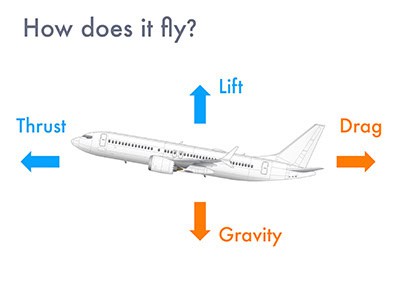
Other Considerations for Safe Unmanned Aircraft Operations
Approximately 18 hours (including 4 hours review)
Objective: Student will be equipped with knowledge and skills for managing drone performance, conducting safe operations, and making informed decisions in emergency situations.
- Module 15: Unmanned Aircraft Loading and Performance
- Module 16: Airport Operations
- Module 17: Emergency Procedures, Maintenance, and Inspection
- Module 18: Physiology and Aeronautical Decision-Making
Review for FAA Part 107 Exam
- Section 1
- Section 2
- Section 3
- Section 4

Understanding the Drone Industry and Unmanned Aircraft Components
Objective: Student will understand the basics of the drone industry, its current state, future potential, and the primary components that make up Unmanned Aircraft
- Module 1: Intro to the Unmanned Aircraft Industry
- Module 2: Current and Future Applications
- Module 3: UAS Platform Configurations and Components
- Module 4: Additional UAS Components
- Module 5: Gimbals and Sensor Technology

TRUST Certification, Flight Fundamentals and Maneuvers
Approximately 15 hours
Objective: Student will receive their TRUST certification, develop practical skills in flying drones, and understanding safety and operational protocols.
- Module 6: Flying Fundamentals
- Module 7: Basic Flight Maneuvers and Getting to Know the Controller
- Module 8: Flying Exercises
- Module 9: Advanced Flying Exercises

Part 107 Drone Regulations, Aviation Chart Reading, and Weather
Approximately 21½ hours
Objective: Student will understand the legal requirements for drone operations, be able to check and locate airspace and weather conditions, and understand aviation radio communication.
- Module 10: Part 107 UAS Regulations
- Module 11: Radio Communications and Airspace
- Module 12: Reading Sectional Charts
- Module 13: Effects of Weather on Unmanned Aircraft
- Module 14: Sources of Weather Information

Other Considerations for Safe Unmanned Aircraft Operations
Approximately 18 hours (including 4 hours review)
Objective: Student will be equipped with knowledge and skills for managing drone performance, conducting safe operations, and making informed decisions in emergency situations.
- Module 15: Unmanned Aircraft Loading and Performance
- Module 16: Airport Operations
- Module 17: Emergency Procedures, Maintenance, and Inspection
- Module 18: Physiology and Aeronautical Decision-Making
Review for FAA Part 107 Exam
2. What Is Included
STEM Principles
Aeronautical implications of air density and density altitude, theories of lift and drag, the four forces of motion acting on a drone and calculating vectors to determine resulting motion, and more.
Critical Thinking & Problem Solving
Learning to fly drones and understanding their applications requires strategic thinking, planning, and problem-solving, essential skills for any career and life in general.
Student Support
Weekly Office Hours. Watch interviews with real-world drone operators in construction, real estate, public safety, military, agriculture and more. Though not required, we have found students operating in a group of some sort appear to be more engaged than those taking the class alone.
Parent Support
Weekly Office Hours. Your student’s progress is monitored by professionals. Grades are reported to you which you may use, or assign your own grade for transcripts or reporting purposes.
Introduction To The Drone Industry
Understand the current state of the industry, its future applications, and key players.
UAS Configurations & Components
Insight into different UAS configurations, their components, and how to choose the right drone based on specific requirements.
Flying Fundamentals & Flight Maneuvers
Knowledge of flight fundamentals, pre-flight checks and safety procedures. Practical guidance on FAA radio communications, sectional chart analysis, and flight planning.
FAA Part 107 Exam Preparation
An in-depth understanding of FAA regulations, including the Part 107 requirements for UAV operation.
HD Video Training
Over 3 hours of HD video lessons, taught by expert instructors who are leaders in the field. These will guide your student through every aspect of drone technology, with clear, easy-to-understand instructions.
Hands On Module Exercises
At the end of each module, students will apply what they’ve learned through practical exercises designed to reinforce their knowledge and skills.
Comprehensive E-Textbook
Your student will have access to a 190-page e-textbook packed with valuable information, diagrams, and practical tips to deepen their understanding of drone technology and its applications in the world today.
Module Quizzes
To assess comprehension and knowledge retention, each module has quizzes, reinforcing the concepts taught and evaluating your student’s understanding of the material.
Ready For Success
By the end of the course, your student will not only be equipped with the knowledge to pass their Part 107 exam, but they will also be proficient in flying GPS-enabled drones. They will have a deep understanding of how drones are used across various industries and a solid grounding in how to implement this knowledge in the real world. This is more than a course; it is a launchpad to the future.
3. Pricing
Pricing (Note: The $695 price is discounted until 2/28/25, per below)
You can still become a Home-Schooler member for $45 for the rest of the school year and get the $395 Member Discounted price. You must Complete the Membership Enrollment first in order to get the Member Discount.
4. FAQ
Do you offer a Money Back Guarantee?
How long do I have to complete the online course?
How old do I have to be?
Do I need to have a drone to take this course?
Is there a fee for the FAA Part 107 Exam?
What are the Part 107 License Eligibility Requirements?
5. Enroll Now
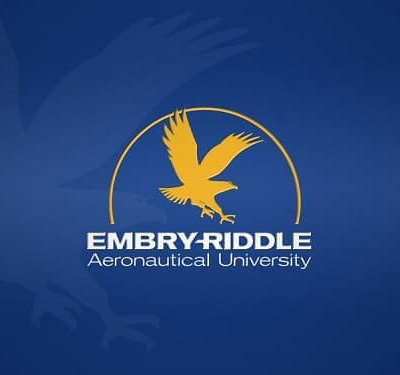
FAA TRUST Partner:
Embry-Riddle Aeronautical University
At the end of Section 2 of this course the student will apply everything they have learned to that point to get their first certificate: the FAA TRUST certificate.
Embry‑Riddle Aeronautical University is our selected FAA-approved Test Administrator of The Recreational UAS Safety Test (TRUST) partner.
TRUST is the first step towards getting the Part 107 certificate. Learn more about the FAA TRUST portal at the Embry-Riddle website.

